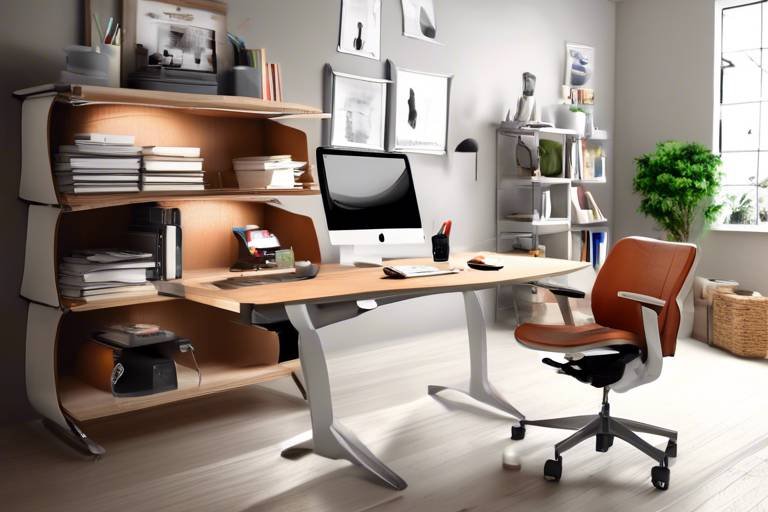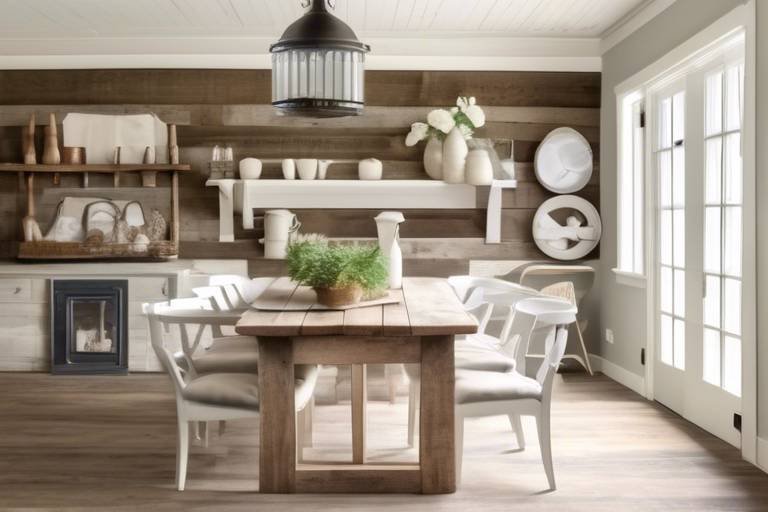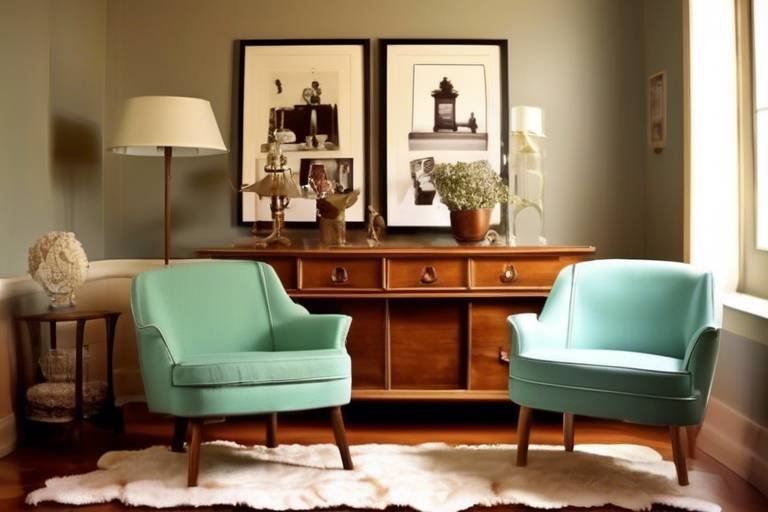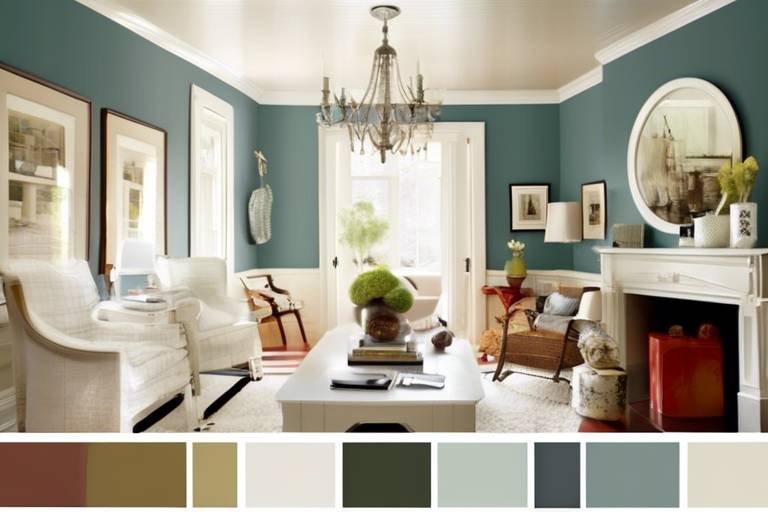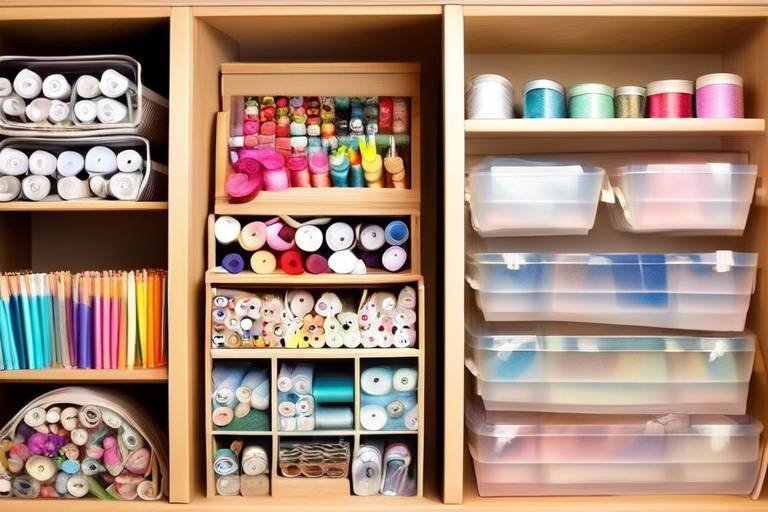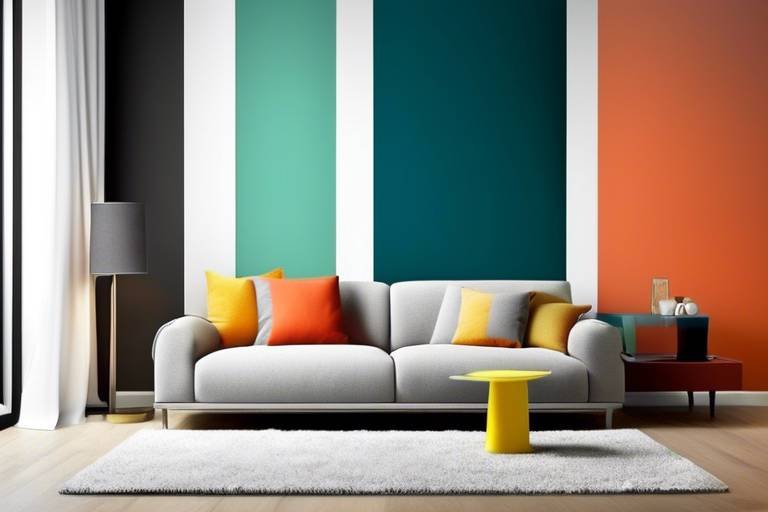How to Create an Efficient Layout in Compact Spaces
Creating an efficient layout in compact spaces can be a challenging yet rewarding task. By utilizing smart strategies and design techniques, you can transform a small area into a functional and aesthetically pleasing space that maximizes every inch available.
One key tip is to utilize multifunctional furniture that serves more than one purpose. This not only saves space but also increases the versatility of the room. Pieces like sofa beds, storage ottomans, and extendable tables are great examples of furniture that can adapt to different needs.
To make the most of limited space, it's essential to maximize vertical space. Installing wall shelves, hanging organizers, and tall storage units can help free up floor space and create storage solutions that reach up towards the ceiling, utilizing every inch efficiently.
Strategic lighting placement is another crucial aspect of optimizing a small space. By strategically positioning lighting fixtures, you can illuminate different areas effectively and create the illusion of a larger room. Soft, ambient lighting can also contribute to a cozy atmosphere.
When it comes to color choices, opting for light colors can significantly impact how spacious a room feels. Light-colored paint and furnishings can make a space appear brighter, airier, and more expansive, enhancing the overall layout and ambiance.
Implementing smart storage solutions is key to keeping a compact space organized and clutter-free. Under-bed drawers, hidden cabinets, and storage ottomans are excellent options for maximizing storage while maintaining a clean and tidy environment.
Creating distinct zones for different functions within the space can help define specific areas for various activities such as work, relaxation, and dining. This not only enhances the functionality of the room but also improves the flow and organization of the space.
Strategically placing mirrors can also play a significant role in making a small space feel larger. Mirrors reflect natural light, creating the illusion of depth and openness, which can visually expand the room and enhance its overall appeal.
Lastly, it's essential to keep the space clutter-free by regularly decluttering and organizing belongings. Maintaining a clean and open layout promotes a sense of spaciousness and tranquility, making the room more inviting and comfortable.
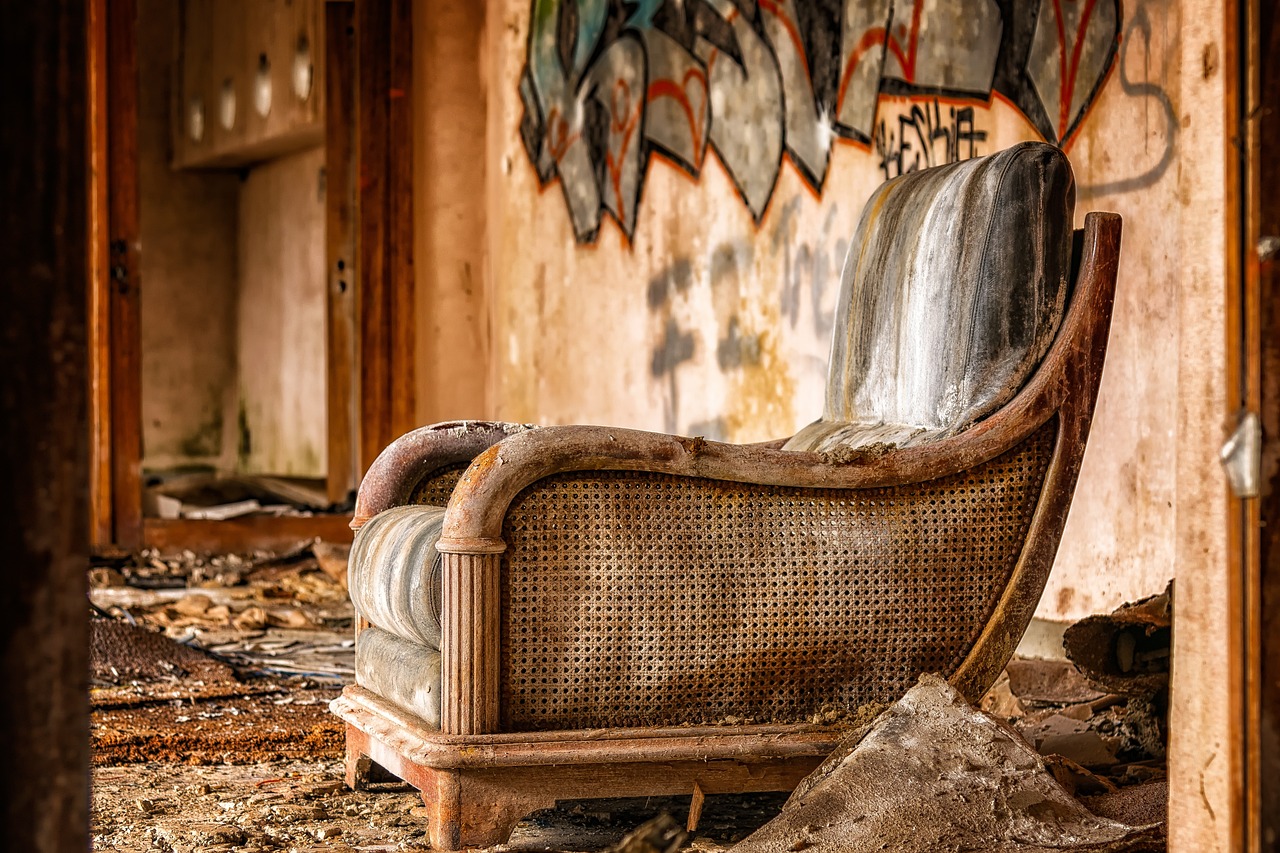
Utilize Multifunctional Furniture
When it comes to optimizing small spaces, one of the most effective strategies is to . These pieces are designed to serve more than one purpose, making them ideal for compact areas where space is limited. By selecting furniture that can fulfill multiple functions, you not only save space but also increase the versatility of your room.
Imagine having a sofa that can transform into a bed for overnight guests or a coffee table with hidden storage compartments to keep your living room clutter-free. Multifunctional furniture not only maximizes space but also adds a touch of innovation and creativity to your layout.
Additionally, folding tables and chairs are perfect for small dining areas, as they can be easily tucked away when not in use, creating more room to move around. The key is to look for pieces that offer functionality without compromising on style and comfort.
By incorporating multifunctional furniture into your small space, you can create a dynamic and efficient layout that caters to your various needs without feeling cramped or cluttered.

Maximize Vertical Space
When dealing with limited square footage, one of the most effective strategies to optimize the space is to maximize vertical space. By thinking upwards, you can significantly increase storage capacity and create a visually appealing environment. Utilizing the vertical dimension of a room not only enhances functionality but also adds a sense of spaciousness.
One way to make the most of vertical space is by incorporating wall shelves. These practical storage solutions not only serve as decorative elements but also help keep items off the floor, making the room appear less cluttered. Additionally, hanging organizers can be a game-changer in small spaces, providing a place for essentials without taking up valuable floor space.
Another effective method is to invest in tall storage units such as bookcases or cabinets. These pieces of furniture not only offer ample storage but also draw the eye upwards, creating the illusion of higher ceilings and a more expansive room. By utilizing the full height of the walls, you can store items efficiently while maintaining an aesthetically pleasing layout.
Strategic placement of furniture can also contribute to maximizing vertical space. Opting for taller pieces, such as floor-to-ceiling bookshelves or wardrobes, can help draw the eye upwards and create a sense of verticality in the room. This not only maximizes storage but also adds visual interest to the space, making it feel more dynamic and well-utilized.
By focusing on utilizing every inch of vertical space available, you can transform a compact room into a functional and visually appealing area. Embracing the height of the room through smart storage solutions and strategic furniture placement can elevate the layout to new heights, literally and figuratively.

Strategic Lighting Placement
Tips and strategies for optimizing small spaces to maximize functionality and aesthetics.
When it comes to designing a compact space, strategic lighting placement can make a significant difference in how the area looks and feels. By carefully positioning lighting fixtures, you can create the illusion of a larger space and enhance the overall ambiance of the room.
One effective way to utilize lighting in a small space is to incorporate a mix of overhead lights, task lighting, and ambient lighting. Overhead lights can brighten up the room evenly, while task lighting can be used to illuminate specific areas such as a workspace or reading nook. Ambient lighting, on the other hand, can set the mood and create a cozy atmosphere.
Consider the natural light sources in the room and complement them with artificial lighting to fill any dark corners and create a well-lit environment. Placing light fixtures at different heights and angles can also help to distribute light evenly throughout the space, reducing shadows and making the room appear more spacious.
Moreover, using adjustable lighting options like dimmer switches or lamps with adjustable arms can provide flexibility in controlling the intensity and direction of light, allowing you to adapt the lighting to different activities and times of the day.
Remember, lighting not only serves a functional purpose but also contributes to the overall aesthetics of the room. Choosing fixtures that complement the style and color scheme of the space can enhance its visual appeal while maximizing the perceived size of the area.
By strategically placing lighting fixtures and experimenting with different lighting techniques, you can transform a compact space into a well-lit, inviting environment that feels larger and more open.
1. How can I make a small room look bigger with lighting?
2. What are the best types of lighting fixtures for compact spaces?
3. How can I balance natural and artificial light in a small room?
4. Are there any energy-efficient lighting options suitable for small spaces?
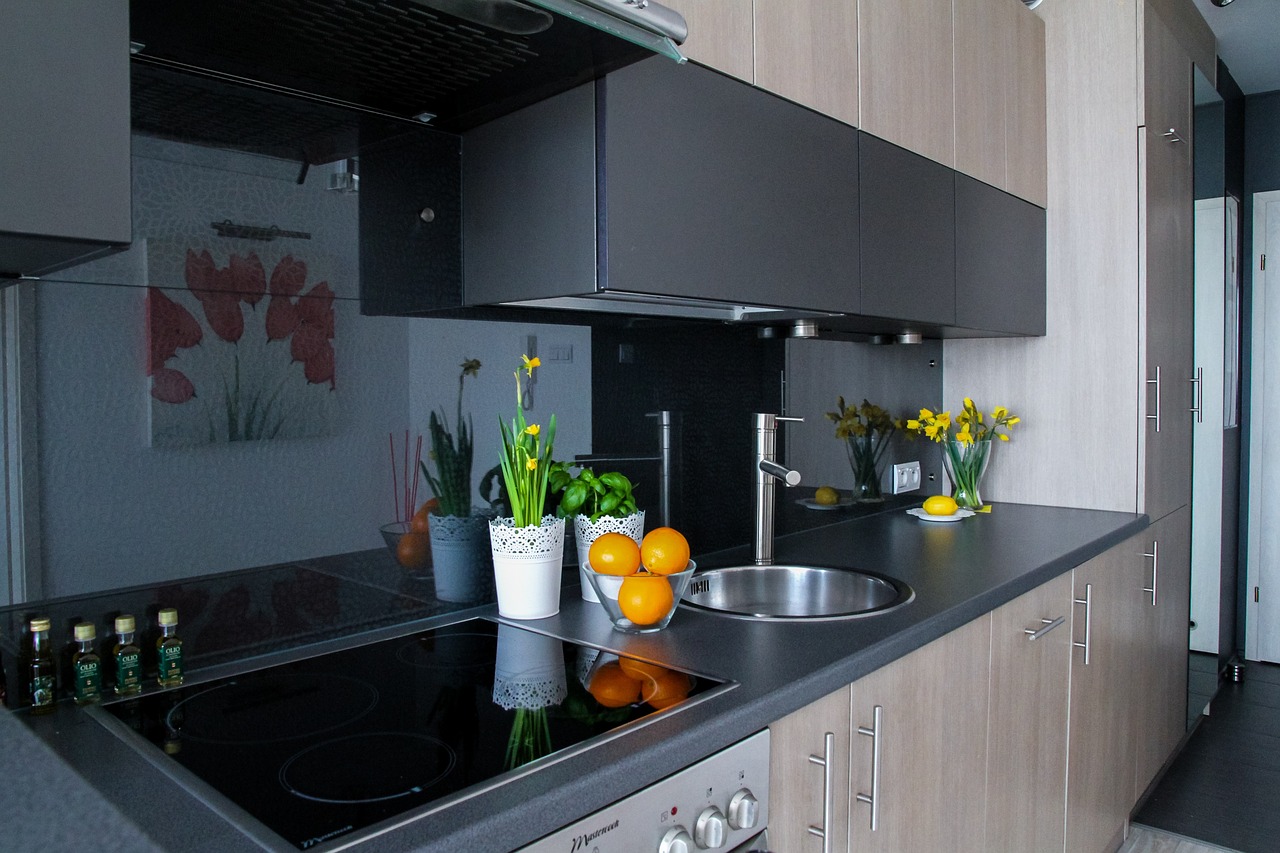
Opt for Light Colors
Tips and strategies for optimizing small spaces to maximize functionality and aesthetics.
When designing a compact space, choosing the right color palette can make a significant difference in how spacious and inviting the room feels. Opting for light colors such as soft whites, pale blues, and gentle grays can visually expand the area, creating a sense of airiness and openness. Light-colored walls and furnishings reflect natural light, making the room appear brighter and more expansive. Additionally, incorporating light hues can help create a soothing and tranquil ambiance, perfect for small spaces where relaxation is key.
Pairing light colors with strategically placed mirrors can further enhance the illusion of space, as mirrors reflect light and create a sense of depth. By utilizing light colors in your compact space, you can transform a potentially cramped area into a welcoming and visually pleasing environment.

Implement Smart Storage Solutions
When it comes to optimizing small spaces, implementing smart storage solutions is key to maintaining a clutter-free and organized environment. By incorporating creative storage options, you can make the most out of limited space while ensuring functionality and aesthetics are not compromised.
One effective strategy is to utilize under-bed drawers, which are perfect for storing items that are not frequently used but still need to be easily accessible. These drawers maximize the often-underutilized space under the bed, keeping belongings out of sight and neatly organized.
Another smart storage solution is hidden cabinets, which can be seamlessly integrated into walls or furniture to provide additional storage without taking up valuable floor space. These discreet storage compartments are ideal for stashing away items that you want to keep handy but out of sight.
Additionally, storage ottomans serve a dual purpose by providing a stylish seating option while also offering hidden storage space inside. These versatile pieces of furniture are perfect for small living areas where every square inch counts.
By incorporating these smart storage solutions into your compact space, you can effectively declutter and organize your belongings, creating a more functional and visually appealing layout.

Create Zones for Different Functions
Tips and strategies for optimizing small spaces to maximize functionality and aesthetics.
Select furniture pieces that serve multiple purposes to save space and increase versatility in a compact area.
Use wall shelves, hanging organizers, and tall storage units to make the most of vertical space in a small room.
Illuminate different areas of the room effectively by strategically placing lighting fixtures to create the illusion of a larger space.
Choose light-colored paint and furnishings to make the room feel more spacious and airy, enhancing the overall layout.
Incorporate creative storage solutions like under-bed drawers, hidden cabinets, and storage ottomans to declutter and organize efficiently.
When designing a compact space, it's essential to create distinct zones for different functions. By defining separate areas within the room for specific activities such as work, relaxation, and dining, you can enhance functionality and flow seamlessly. Imagine your space as a well-orchestrated symphony, each zone playing a different instrument but coming together harmoniously to create a beautiful melody.
Strategically place mirrors to reflect natural light and create the illusion of a larger, more open space in compact areas.
Regularly declutter and organize the space to maintain a clean and open layout that promotes a sense of spaciousness and tranquility.
Coming soon...

Use Mirrors to Reflect Light
Compact spaces can present unique challenges when it comes to design and functionality. However, with the right tips and strategies, you can transform a small area into a stylish and efficient living space that maximizes both form and function.
Selecting furniture that serves multiple purposes is key to saving space and increasing versatility in a compact area. Pieces like sofa beds, storage ottomans, and extendable dining tables can help maximize functionality without compromising on style.
When floor space is limited, it's essential to make the most of vertical space. Utilize wall shelves, hanging organizers, and tall storage units to store items efficiently and keep the room clutter-free.
Effective lighting can significantly impact the perception of space in a compact room. By strategically placing lighting fixtures such as wall sconces, pendant lights, and floor lamps, you can create the illusion of a larger and more open area.
Light-colored paint and furnishings can work wonders in making a small room feel more spacious and airy. Shades of white, cream, and pastels reflect light, brighten up the space, and contribute to an overall sense of openness.
Creative storage solutions are essential for keeping a compact space organized and functional. Consider incorporating under-bed drawers, hidden cabinets, and floating shelves to maximize storage capacity while maintaining a clean and streamlined look.
Dividing the space into distinct zones for various activities can help define the room's purpose and improve flow. Whether it's a designated work area, a cozy reading nook, or a dining space, creating separate zones enhances functionality and visual appeal.
Strategically placing mirrors in a compact space can work wonders in enhancing natural light and creating the illusion of a larger room. Mirrors reflect light, making the space feel brighter and more expansive, while also adding a touch of elegance to the decor.
Maintaining a clutter-free environment is crucial for maximizing space and creating a sense of tranquility in a compact room. Regularly decluttering, organizing, and minimizing unnecessary items will help keep the layout open, inviting, and conducive to relaxation.
1. How can I make a small room look bigger without major renovations?
2. What are some space-saving furniture options for compact spaces?
3. How important is lighting in enhancing the perception of space in a small room?
4. What are the best colors to use in a small space to create a sense of openness?
5. What are some easy ways to declutter and maintain an organized layout in a small room?
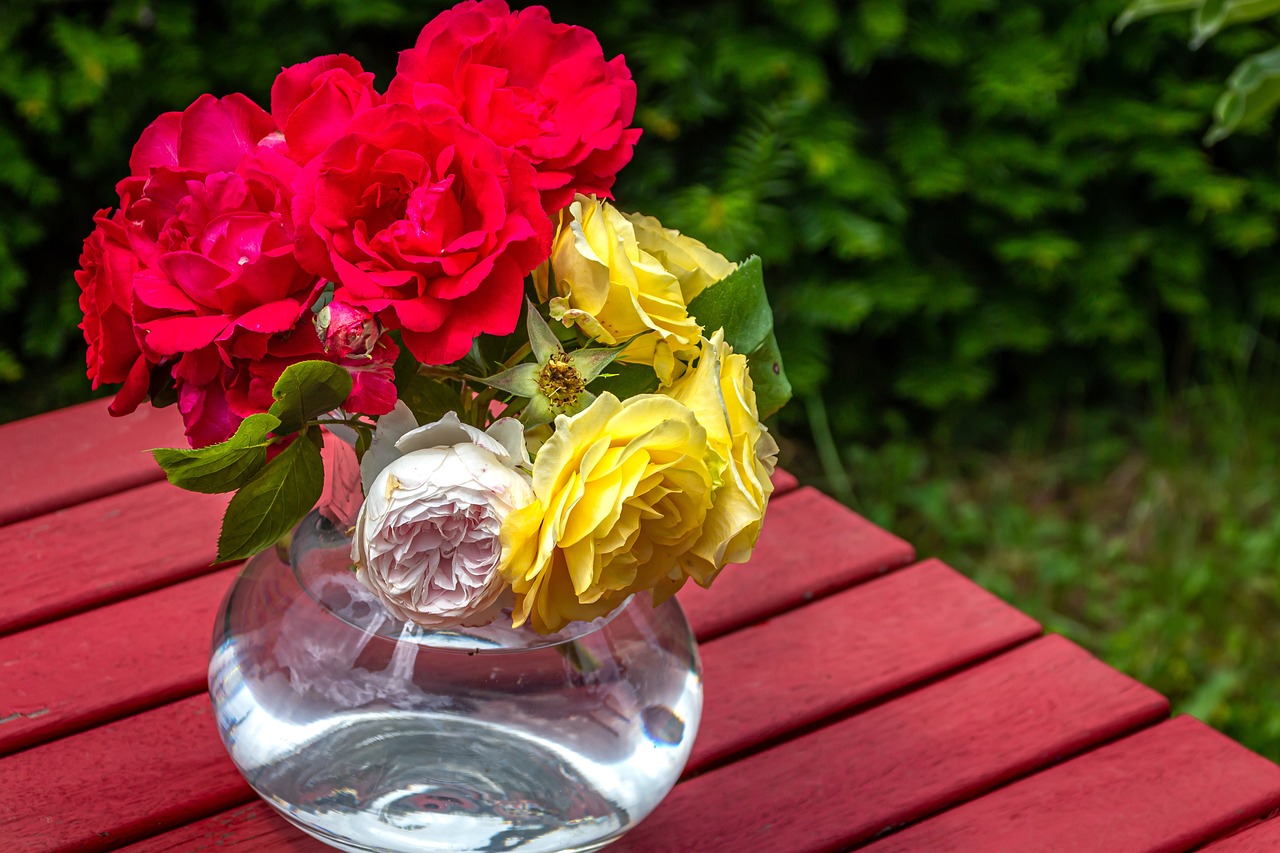
Keep It Clutter-Free
When it comes to creating an efficient layout in compact spaces, one of the most crucial aspects is to keep it clutter-free. Clutter can easily make a small room feel even more cramped and chaotic, diminishing the functionality and aesthetics of the space. By maintaining a clutter-free environment, you not only enhance the visual appeal of the room but also promote a sense of calmness and serenity.
To achieve a clutter-free space, it is essential to prioritize organization and storage solutions that help keep items out of sight yet easily accessible when needed. Utilizing furniture with built-in storage compartments, such as ottomans with hidden storage or coffee tables with drawers, can be a practical way to minimize clutter while maximizing functionality.
Another effective strategy to keep a compact space clutter-free is to establish a regular decluttering routine. By periodically assessing items in the room and getting rid of unnecessary belongings, you can prevent the accumulation of clutter and maintain a streamlined layout.
Additionally, creating designated storage areas for different categories of items, such as using baskets or bins for toys or magazines, can help prevent clutter from spreading throughout the room. By assigning specific storage solutions to different items, you can easily locate and store belongings, reducing the likelihood of clutter buildup.
Furthermore, incorporating minimalist design principles into the room's decor can contribute to a clutter-free environment. Opting for simple and streamlined furnishings, avoiding excessive decorations, and keeping surfaces clear of unnecessary items can all help create a visually spacious and clutter-free space.
Remember, a clutter-free space not only enhances the functionality and aesthetics of a compact room but also fosters a sense of tranquility and relaxation. By implementing effective organization strategies and maintaining a tidy environment, you can ensure that your small space remains inviting and harmonious.
Frequently Asked Questions
- What are some tips for selecting the right multifunctional furniture?
When choosing multifunctional furniture for compact spaces, consider pieces that can serve dual purposes such as a storage ottoman that also functions as a coffee table, or a sofa bed for guests. Look for items that can maximize both space and functionality to make the most of your limited area.
- How can I effectively create zones for different functions in a small room?
To define separate zones within a compact space, use area rugs, different lighting fixtures, and varying furniture arrangements. For example, place a small desk and chair in one corner for a workspace, a cozy armchair and side table for a reading nook, and a compact dining set for meals. This helps delineate each area while maintaining a cohesive overall layout.
- Why is strategic lighting placement important in optimizing small spaces?
Proper lighting can significantly impact the perception of space in a compact room. By strategically placing lighting fixtures such as wall sconces, floor lamps, and overhead lights, you can create a well-lit environment that enhances the sense of openness and airiness. This can make the room feel larger and more inviting.
- How do light colors contribute to making a room feel more spacious?
Light colors like white, pastels, and soft neutrals have the ability to reflect natural light and visually expand the perceived size of a room. By incorporating light-colored paint on walls, ceilings, and furnishings, you can brighten the space and create a sense of openness that is essential in compact areas.


